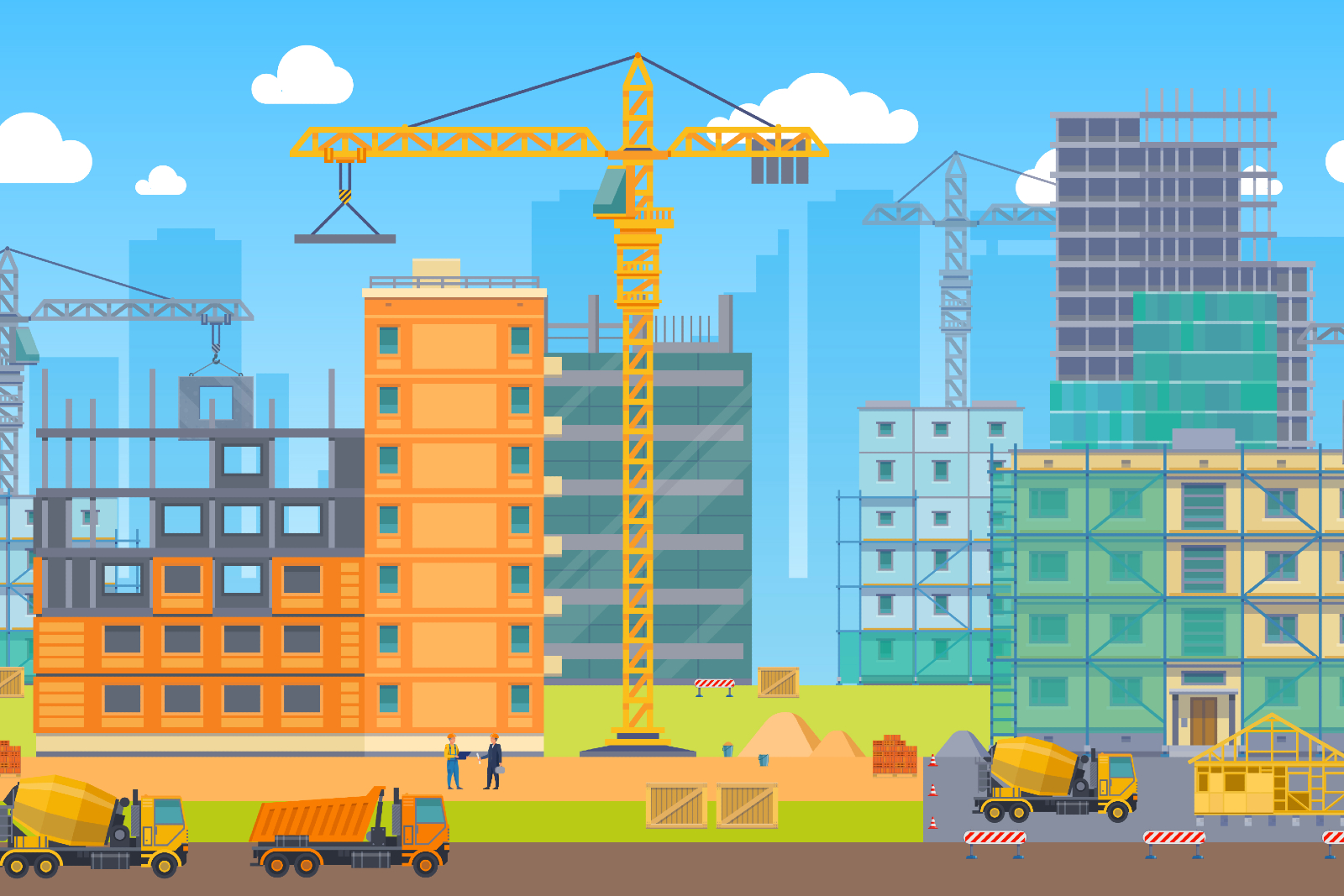
Statistics from the Health and Safety Executive show that there has been an average of 61,000 non-fatal injuries in construction each year and that during the period 2020-21 there were 39 fatal injuries. Although that might not seem a large number, it’s four times the rate for all industries!
Whilst falls from height and slips, trips and falls feature among the most common causes of injury, every year thousands of people are injured due to hazards arising from the equipment they’re using on site. Here are six common dangers to watch out for:
1. Being struck by an object
If equipment and other objects are moving, flying or falling, then there’s a clear safety risk. Being struck by an object accounted for 11% of fatal injuries last year with another 14% involving moving vehicles or machinery.
For a construction site to work properly, things have to move around but this doesn’t have to lead to accidents or tragedy. Some key things to remember are not to leave equipment or objects unsecured and to make sure anything that moves is visible to site operatives.
2. Getting caught-in or between
Another safety hazard is the possibility of becoming caught inside or between pieces of equipment. Serious injuries can arise from situations like getting clothing caught in a moving part of machinery or being pinned between equipment and the ground or wall.
To avoid this, workers should receive training in how to properly protect themselves and equipment should always be guarded and secured.
3. Vibration
Operating heavy construction equipment can expose workers to vibration, in some cases affecting just part of the body (e.g. arms and hands) and in others affecting the whole body (e.g. while sitting in the cab of plant machinery). The health effects of vibration include everything from lower back pain to damage to internal organs so this kind of activity must be regulated.
To reduce the impact, workers should limit the number of hours they operate each piece of equipment and take regular breaks.
4. Burns
In construction, the risk of burns comes from a variety of areas – for instance through contact with equipment that’s overheated, working with hazardous chemicals, undertaking jobs requiring the use of hot materials/ processes or working with power lines.
When it comes to equipment, be sure to keep on top of any maintenance requirements as this will help to avoid overheating or other faults that might lead to injury. If you do suffer a burn, get it treated immediately as any delay can lead to more serious or permanent damage.
5. Electrocution
Handling power lines, using equipment that’s faulty, misusing a piece of equipment or overloading an extension cord – all of these situations present a risk of electrocution, a shock that no-one wants to experience!
Only use equipment as per the operating instructions and follow all safety protocols. Be sure to check things like whether the equipment is suitable for indoor or outdoor use and stick to the manufacturers’ recommendations.
6. Noise
The HSE estimate that more than 2 million people in Great Britain are exposed to unacceptable levels of noise at work and state that noise-induced hearing loss is the second most common reason for employers’ liability insurance claims for occupational health.
Workers in the construction industry are at high risk for noise related ill health for the obvious reason that construction sites and machinery are noisy!
Quality of life can be badly affected by hearing impairment or loss, so the best wat to avoid this is to eliminate or substitute as many noisy processes as you can (e.g. using a hydraulic block splitter rather than a cut-off saw to cut blocks). Other safety measures include removing people from the noisy area wherever that’s possible, ensuring hearing protection is correctly worn and creating hearing protection zones.
Put safety first
The hazards associated with construction sites and the equipment used within those environments can lead to severe injuries and health complications, but in most cases such outcomes are preventable.
Read the operating procedures, check manufacturers’ recommendations, keep equipment secured and well-maintained, choose safer procedures/ equipment wherever possible, wear protective gear and take breaks! Doing all of these things could be the difference between being able to continue with life as you know it or dealing with a life-changing injury.
Be over-cautious and stay on your guard.
21.03.2022
Feature image: Freepik








